Image Credit: Roger Normand
[Editor’s note: Roger and Lynn Normand are building a Passivhaus in Maine. This is the 13th article in a series that will follow their project from planning through construction.]
We hired Jackson Tree Services to cut down over 30 mature pine trees along the north and west perimeter of our lot. I was saddened to watch these stately pine trees topple over one by one, felled by the relentless bite of owner Lee Jackson’s chainsaw and his strong-armed supporting crew, Dan and Justin. But moving EdgewaterHaus’ footprint as far from the steep banks on the east and south sides of our lot was a critical priority. That placed the house footprint squarely in the midst of these trees. These trees had to go.
Lee and his crew hustled tirelessly throughout a warm, breezy, overcast day with intermittent showers, never stopping except to sharpen the chainsaw or rig guy-lines from the chipper to safely cut the next tree. I believe you could put a dime on the ground along the centerline of where the tree would fall, and Lee would drop the tree dead on top of it. All the tree limbs went into the chipper, which broadcast the bite-size pieces of wood and pine needles across the lot where they will decompose to add to the organic matter in the soil.
At the end of the day, all that was left to cut were some nine “sticks” — a.k.a. narrow trees — that Lee would return the next day to cut down with the help of the boom on the logger’s truck.
Maine is mostly forest
Maine is known as the Pine Tree State, with over 90 percent of the state forested. White pine trees tower over other the deciduous and coniferous trees that cover 17 million forested acres across the state. Forest products have played a prominent role throughout the history of Maine, from the early wooden shipbuilding industry along Maine’s rugged coast line, to paper mills still in operation in central Maine. No wonder the pine tree is prominently displayed on the state flag.
Many of the lakefront cottages I remember visiting when I was a kid had been built from pine trees growing on the site. The land was cleared, the pine logs brought to a nearby family-operated sawmill, and the lumber hauled back to the site to be used to frame and sheath the building and cover interior spaces. Many of these cottages still stand today with their exterior painted clapboards and unfinished knotty pine interiors that have aged from an initial creamy white color to a rich golden tan.
Here’s a video showing the logging operation.
Can we turn our trees into lumber?
So what to do with 30 plus reasonably good quality mature pine trees?
Just like previous generations, why not use some of the lumber in EdgewaterHaus? In fact, why not use it in one room — say, the three-season room that overlooks the river?
We had long ago decided that we wanted this room to have a very different look and feel than the rest of the house. We wanted it to have a greater connection to the outdoors. Using knotty-pine boards for the interior walls and ceiling, with boards milled from pine trees harvested from our lot, would give the room the sense of a traditional Maine waterfront camp, and form a continuing bond to the land from which EdgewaterHaus would rise.
In search of a sawmill
But how to get the logs milled into lumber? The tiny sawmills that once dotted the area have long disappeared. (For more on this topic, see Local Food, Local Wood.)
I tried to find someone with a portable sawmill. I have often seen Wood-Mizer brand portable sawmills being sold at the woodworking shows I occasionally attend. I did meet with one individual who operated a portable sawmill and could cut the logs on site, but the logistical challenges seemed ill-suited to the task. The benefits of milling the lumber on site were negated by questions of how to load these big logs onto the portable mill, how to get rid of the bark and log off-cuts, and how to remove the remaining unsuitable logs from our lot.
So I explored hauling the logs to one of two remaining saw mills within a 50-mile radius of EdgewaterHaus. One mill was running at capacity to fulfill commercial contracts and not interested in my small job. However, Hurd Lumber Company, a third-generation family sawmill located along the Maine-New Hampshire border in tiny Acton, Maine, was willing to do the job.
And we find a trucker…
At the suggestion of Lee Jackson of Jackson Tree Service who had cut the trees, we hired Tim Chick of Chick Forest Products in Gorham, Maine (no web site, but Tim can be reached at 207-632-3062). Tim would select the best logs and haul them to Hurd Lumber, and then return to take the remaining logs for pulp.
Here’s a video of Tim cutting the trunks to log lengths and loading the logs on his truck.
The first article in this series was Kicking the Tires on a Passivhaus Project. Roger Normand’s construction blog is called EdgewaterHaus.
Weekly Newsletter
Get building science and energy efficiency advice, plus special offers, in your inbox.

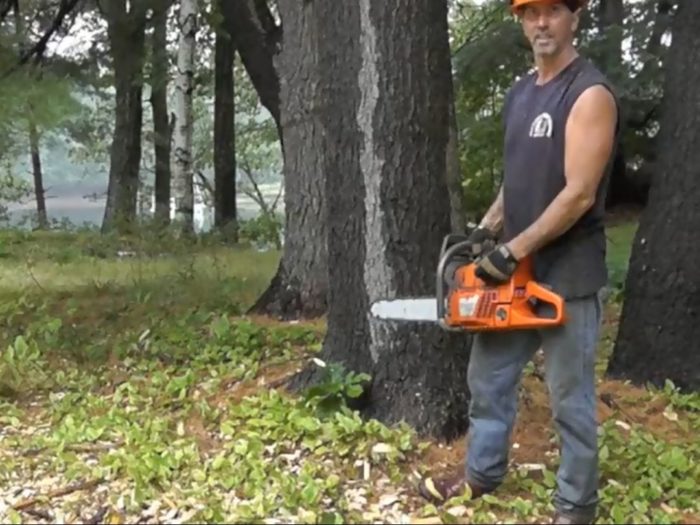




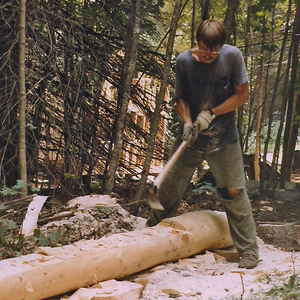
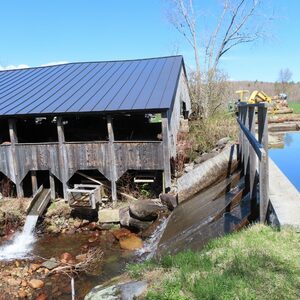
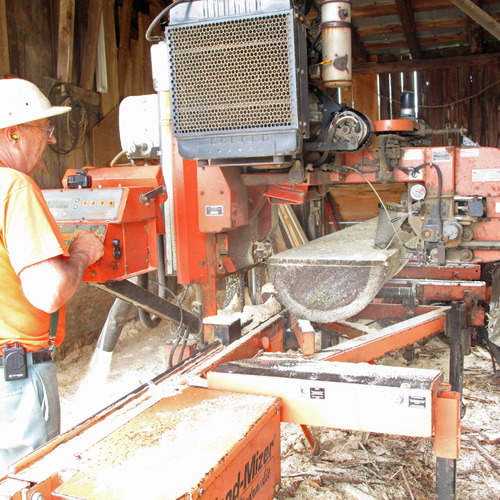
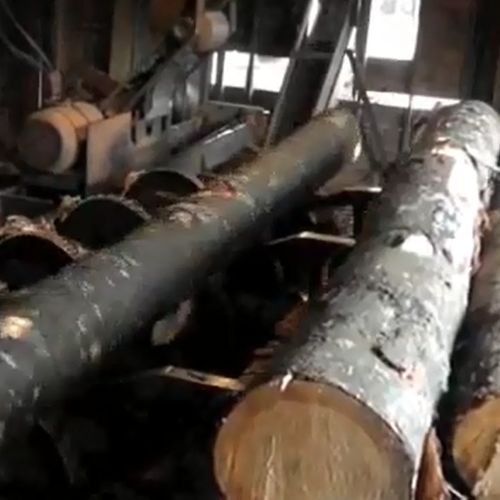






7 Comments
Ear protection?
I couldn't help but notice that Mr. Jackson had ear protection to , uh, protect his hard hat from the noise of his chainsaw. I couldn't tell if he or his helpers manning the chipper had ear plugs that might not show, but none had over-the-head protectors covering the ears. On a few occasions, I have fed wood into a 12" chipper, and the noise up close from that thing was, well, deafening.
The Achilles' heel of job-site photos and job-site videos
Dick,
You've noticed a fact long known by journalists who use real job-site photos to illustrate stories about construction or other blue-collar trades: real-world photos often show violations of safety provisions and OSHA regulations.
That said: on balance, the value of real-world photos outweighs the advantages of hiring actors to pretend to do blue-collar work.
Your tip is valuable -- thanks for writing. When I was young, I didn't use ear protection. Now I do. We all need regular reminders.
Hearing Protection
I think hearing protection has been rather understated in society compared to eye protection. And hearing protection is somewhat more complex. With eye protection, all you have to do is stop flying objects from entering your eyes.
But with hearing protection, you have to deal with bewildering logarithmic scales of sound pressure per time exposure. I have heard that impact sounds pose their own special hazard level that falls outside of the measure of danger from non-impact sounds. But I am not sure if that is true or how the danger is quantified.
What it all boils down to is that when you put on a set of ear muffs, it is not an automatic certainty that you are fully protected from the sound you are planning to expose your ears to. Many common industrial noises are loud enough to permanently damage hearing, depending on the length of exposure.
impact sounds
Ron Keagle said:
"I have heard that impact sounds pose their own special hazard level that falls outside of the measure of danger from non-impact sounds. But I am not sure if that is true or how the danger is quantified."
I can't quantify it for you, but I sure can testify -- after nearly 8 years of banging nails in enclosed spaces with a framing hammer, and several bouts of partial hearing loss (temporary) I had someone explain to me that I needed to buy a very cheap set of ear plugs as used in target practice (for guns). It helped a lot ... but it's been nearly 30 years since I've been without the constant whine of crickets in my ears and dulled hearing, especially in my right ear.
Dumb, dumb, dumb.
More safety stuff...
Lee should also have his visor down and should be wearing a set of cutting chaps.
When things go wrong with a chainsaw, they go wrong in a hurry.
Once, after adjusting the chain tension on my saw, I got distracted while putting the sprocket cover back on and forgot to fully tighten the nuts.
Midway through the felling cut, the cover came loose and the chain came off the drive sprocket and then off the bar while at full power.
My saw has a little rubber thingy under the drive sprocket that is designed to catch the chain if it comes loose - luckily it worked but it was a real "Holy sh*t" moment.
Ever since I've been a big believer in donning all the safety gear.
Funny though, I had to re-learn this lesson with regards to wearing a roofing harness...
Mr. Normand,
your video about truss manufacturing was so cool that I immediately posted it on Facebook. Perhaps you can follow it up with a trip to Hurd for the milling of your trees--?
Be sure to wear chainsaw hearing protection to prevent hearing damage. There are four basic types of hearing protection: earplugs, muffs, inserts, and plugs. Earplugs fit inside your ear canal to block sound waves from entering the innermost parts of your ear. However, a pair of ear-muff-style hearing protectors will provide you with the best protection against excessive noise. Husqvarna 130 chainsaw https://powertoolsadvisor.com/husqvarna/husqvarna-130-chainsaw-review/ is low noise and a better performance chainsaw, it's easy to use.
Log in or create an account to post a comment.
Sign up Log in